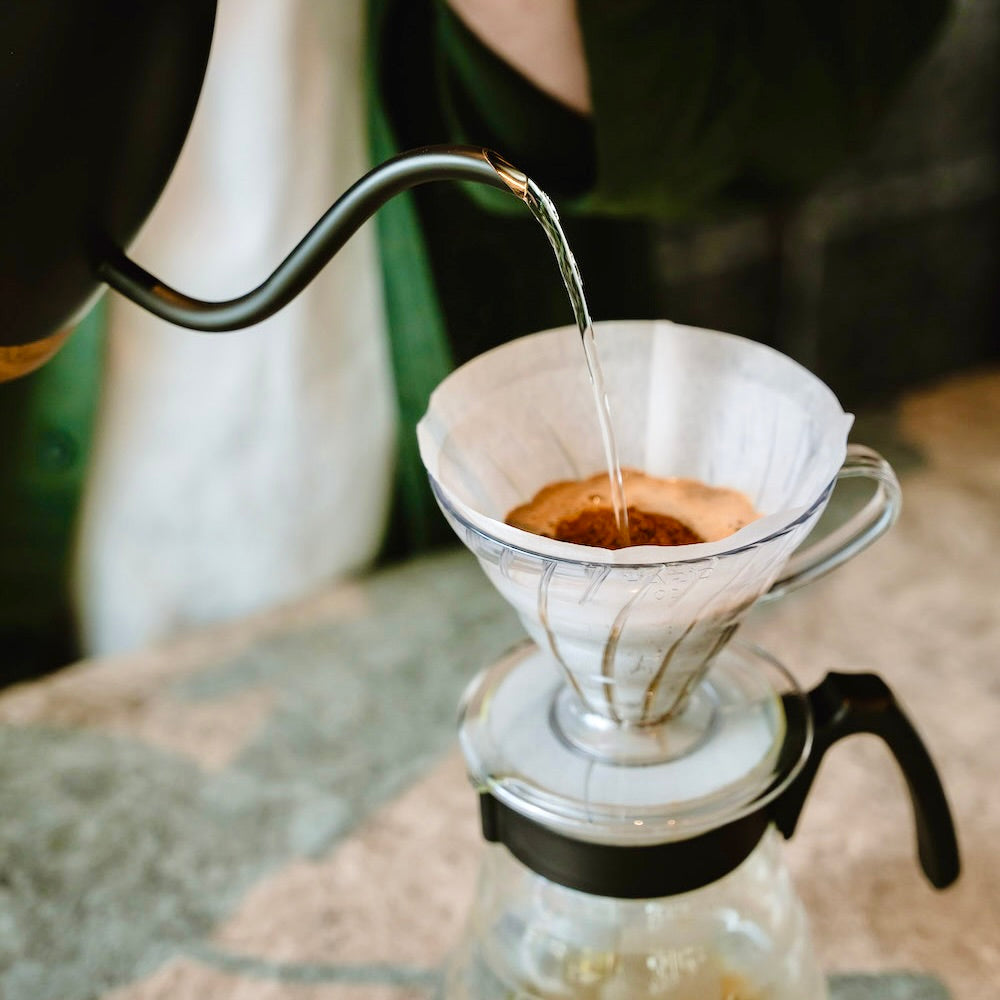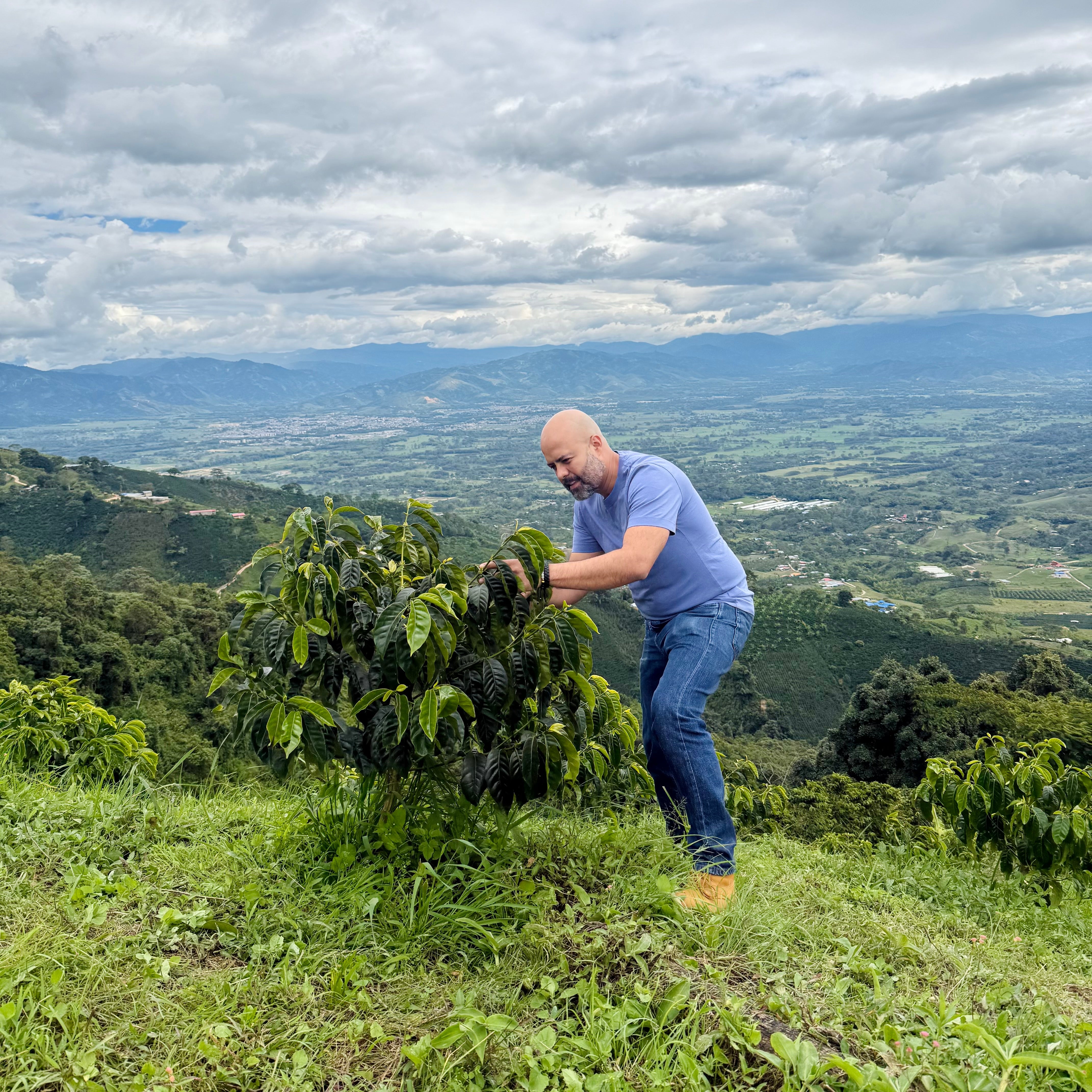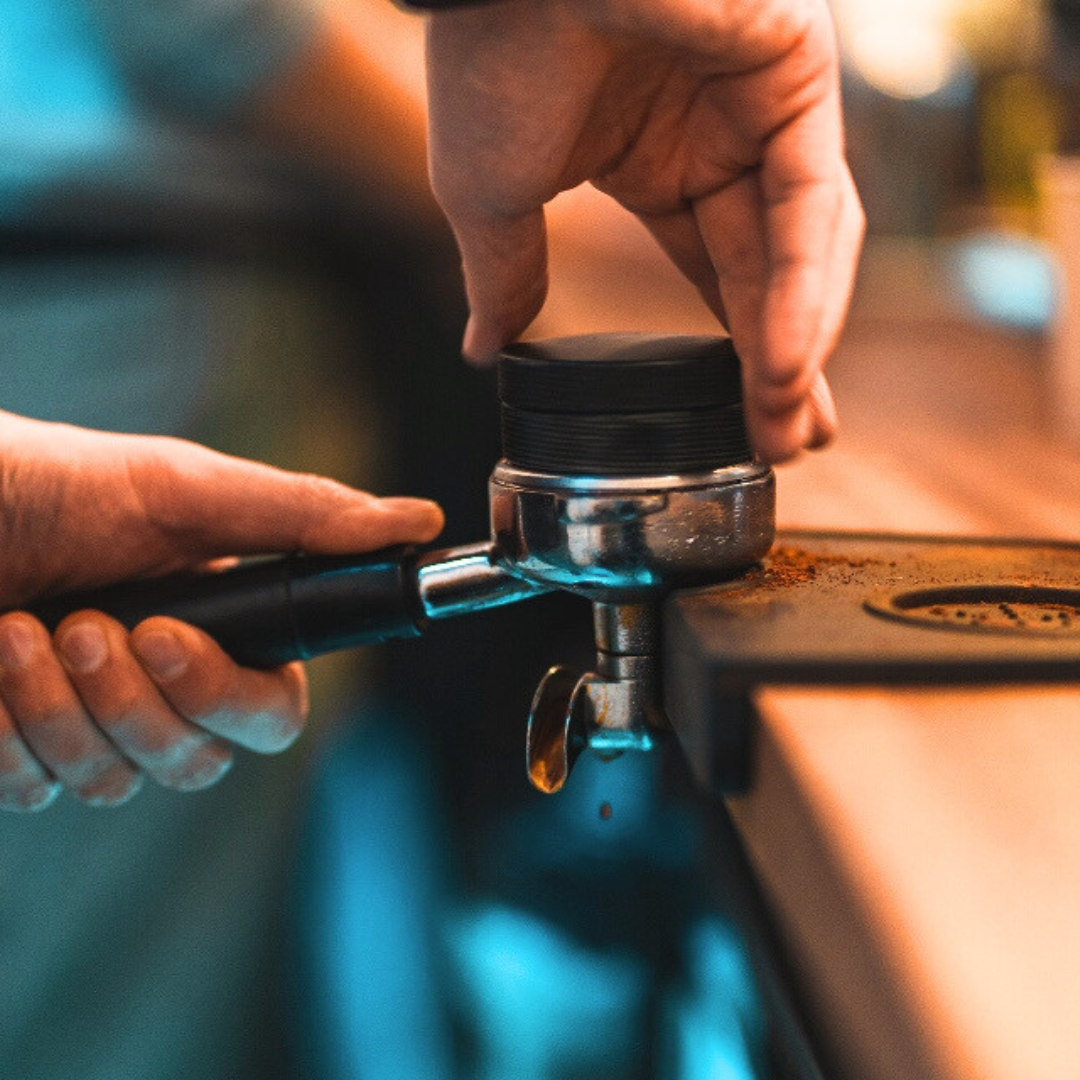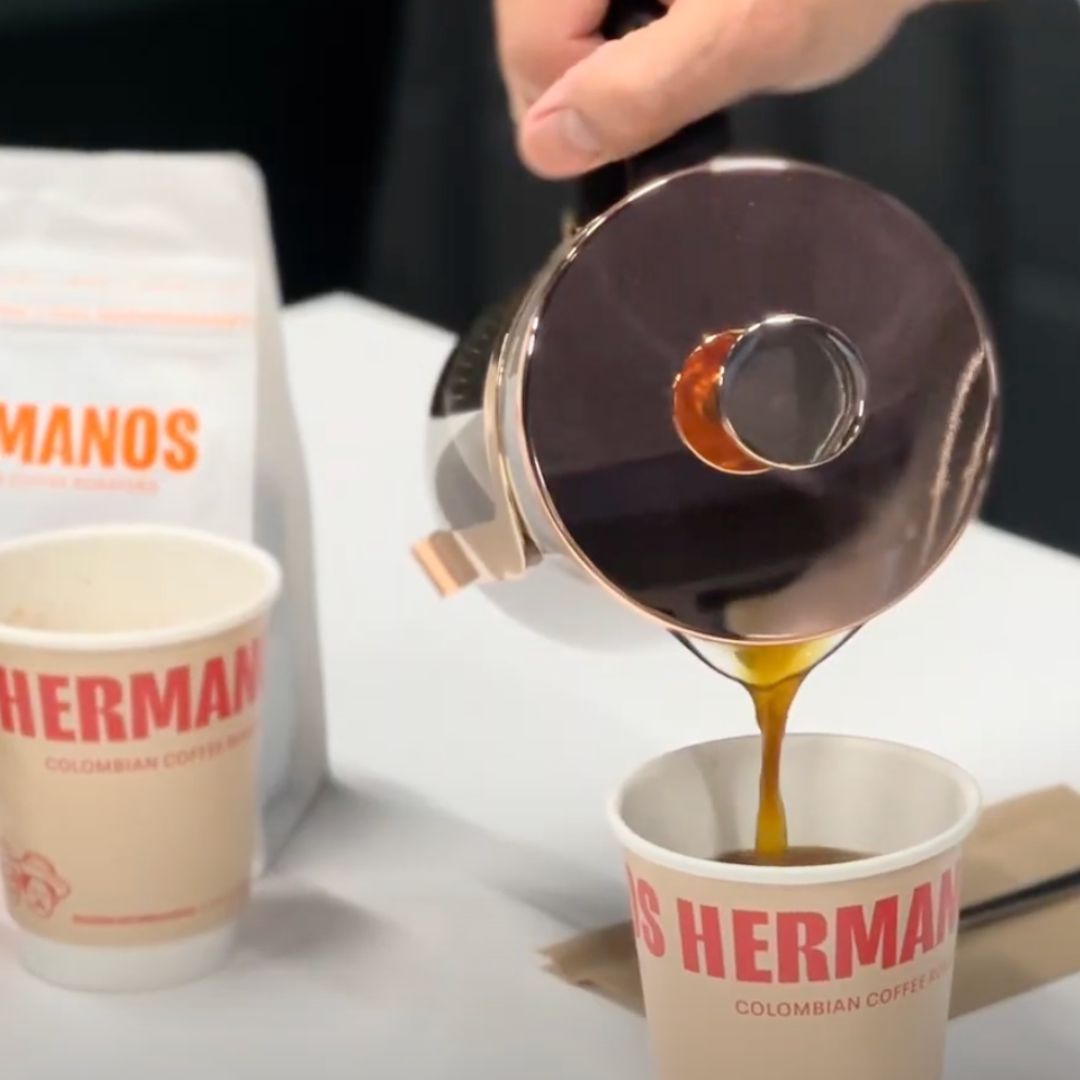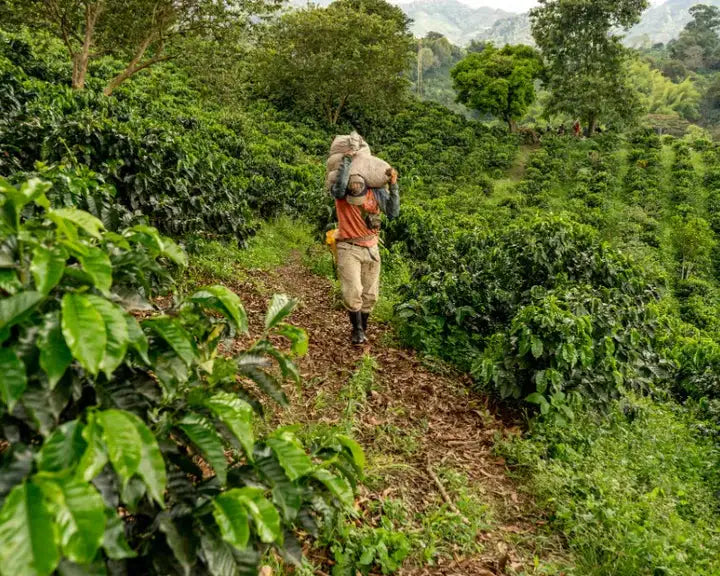Contents
-
What Does Third Wave Coffee Mean?
-
The Three Waves Of Coffee
-
Characteristics Of Third Wave Coffee Shops And Brands
-
What's Happening Now? Is There A Fourth Wave Coming?
-
Final Notes And Takeaways
For some people, there are three waves of coffee. Each of these waves, like other historical metaphors, does its best to encapsulate a complicated history of ideas, events, and societal behaviours. And also like other metaphors, it’s not perfect in the way it does this.
Yet, “third wave coffee” has become an incredibly important label in the world of coffee today.
Whether you’re using the term to describe a certain type of beverage, a bag of beans, or a whole culture, movement and period of coffee history, it’s something worth spending a few moments thinking about (perhaps over a cup of coffee?).
What Does Third Wave Coffee Mean?
Each coffee wave is generally seen as an improvement on the last. Broadly, the trend is towards increased respect for the way coffee is produced; a better understanding of the complexity of coffee as a drink; greater demands for ethical sourcing practices; and, genuine consideration of how coffee growing impacts the physical environment.
Amidst all this, it also says something about the increasingly active role that customers play in buying into and supporting all the things that third wave coffee stands for.
Others might use “third wave” simply as a way to describe coffee products that come with certain attributes (e.g. artisanal, independently procured, freshly roasted coffee) much like the term specialty coffee is used.
Either way, the term has become a way for those in the industry like us — who source, roast, brew, and serve coffee — to set ourselves apart from those who did the very same things before us.
The Three Waves of Coffee

To understand exactly what the third wave is (the one we’re apparently in), looking at the two waves that preceded it helps.
The First Wave
The first wave is considered by many as a period of exploitation of coffee-producing regions for the profit of large brands like Folger’s (one of America’s biggest coffee companies of the 20th century). This involved the mass production of beans to be roasted, ground and then sold in supermarkets.
Farmers weren't paid a very good price for their work and the actual quality of the coffee wasn’t as important as producing large volumes for the international market.
For the consumer, there was certainly love for coffee as a beverage, but very little understanding of how complex it is as a drink, and most consumers were content with blended batches of very poor or average quality beans roasted incredibly dark.
Back then, optimal roast dates weren’t a thing either. Coffee companies were happy to serve what we would now consider stale and out-of-date ground coffee, even by today’s supermarket standards where coffee is still sold up to 24 months after it’s been roasted.
As you might have guessed, the cost to the environment during this period was huge and many rainforests around the world were cleared to make way for huge coffee farms and factory-style processes to mass produce and harvest coffee beans.
-
Instant coffee products featured in most home and workplace environments
-
Consumers developed a preference for dark, bitter coffee, often made from blends of different beans from multiple places
Farmers weren't paid a very good price for their work, with the exploitation of labourers being common.
The Second Wave

While many specialty coffee drinkers are keen to criticise Starbucks coffee, there’s no denying that their contribution to modern coffee culture has been immense.
Brands like this and the famous Peet's Coffee, who helped increase awareness of coffee as a complex agricultural product, took an already loved beverage and focused on things like origins and roasting styles more, both to differentiate themselves and to educate coffee drinkers.
It’s sometimes hard to tell where marketing ends and a genuine respect for coffee begins, but during this time, brands started to pay attention to the way coffee was processed, how it was sourced and different ways it could be prepared beyond simple instant or filter coffee methods.
The actual coffee shop space, or cafe, became more important too, with consumers becoming passionate about spending time physically inside of their favourite shops.
Functioning as a kind of third space between work and home, places like Starbucks became the default location for many people to meet friends, study, read or just have a moment with their coffee.
-
A growing understanding of coffee as a complex product that must be treated with care in order to unleash its best attributes
-
Increased attention paid to the welfare of coffee farmers
-
Usage of a coffee bean’s place of origin as a key selling point or “exotic” factor
-
Preference for flavoured coffee drinks and sugar-rich coffee variations like frappes, as well as fairly bitter dark roasted coffee beans
-
A focus on a new kind of barista and coffee culture, with individuals becoming passionate about the brewing process
The actual coffee space became more important too, with people becoming passionate about spending time in their favourite coffee shops.
Learn How Different Coffee Roasts Affect Flavour
The Third Wave

It’s hard to define an era when you’re living through it, but the third wave of coffee is considered to be a period where even greater focus is put on things like agricultural practices, production methods, product sourcing, processing, and the impact that coffee growing has on local communities and the environment.
In markets around the world (UK, US, Japan, Germany etc), there's also a gradually deepening culture surrounding coffee as an artisanal ingredient. Roasters, shop owners, baristas and other individuals engaged in the business of coffee now see this aspect of coffee as fundamental.
The story behind the beans has never been more important and many coffee companies are creative in the way they showcase the origins and subtle characteristics of their beans. And if higher prices are now charged for "better" cups of coffee, there’s an assumption that a significant part of this should (in theory) be going to those who grow it.
The roles of the roaster and barista now command a greater amount of respect too, recognised for being vital in teasing out the very best from specialty beans.
Add to this prestigious coffee training qualifications, barista competitions, trade shows and a growing number of coffee influencers and it’s obvious that the people who actually make the coffee have now stepped into the limelight.
-
Greater traceability of coffee and origin transparency with brands focusing on telling the story behind the beans
-
A move towards lighter roasts and unleashing the subtle notes of coffee beans (orange, honey or berries etc.)
-
Respect for how complex coffee is as an agricultural product and the dedication it takes to cultivate and process great beans
-
A demand for environmentally friendly and sustainable coffee
The story behind the beans has never been more important.
Characteristics of Third Wave Coffee Shops and Brands

There’s no rulebook for what a third wave coffee shop is or isn’t, but when characterising the kind of shops and brands that prescribe to this mindset, certain patterns do repeat.
The below are some common traits you’ll find among those who call themselves third wave coffee shops, roasters, or other types of coffee businesses.
|
Artisanship
|
The act of bringing out the unique characteristics of each bean is important. Everyone involved in this process, from those who grow the beans to those who brew and serve them, pay extra attention to how each stage influences the final quality of the coffee.
|
|
Traceability
|
Social responsibility is an important principle among coffee brands and many make it a priority to prove exactly where beans have come from (not just the country of origin but the specific farm or estate). The names of farmers or farms will feature on many coffee packets.
|
|
A Knowledge Hub
|
Many third wave shops see themselves as educators on all things coffee, whether that’s through recommendations on how coffee should be prepared, or explanations of why roast profiles or country of origin has an impact on the notes in the cup. Many business owners (especially of small independent shops) are also actively involved in the roasting and brewing process.
|
|
The Coffee Experience
|
The process of preparing coffee is at the heart of the third wave coffee shop. Brew bars sit proudly amidst sophisticated pieces of equipment while baristas prepare drinks with well-honed mastery. Branding and marketing tactics aim to pull people in through a perception of quality, craftsmanship, authenticity and care.
|
|
High Standards
|
The average coffee drinker now knows a great deal about the way coffee is grown, roasted and brewed. No longer content with average affordable coffee, customers of third wave shops are willing to pay more for better coffee.
|
What’s Happening Now? Is There a Fourth Wave Coming?

Some would say that the changes taking place today are so significant it calls for an entirely new wave to capture the mood. And if you were inclined to describe this “fourth wave” it would probably need to accommodate the following important issues facing the coffee world today.
|
Climate Change
|
Many issues relating to climate change (drought, rising temperatures etc.) and the welfare of coffee growing regions around the world will become an increasingly important part of the way we all view coffee. Many farms, including those in Colombia that we source from, have been affected by the changing temperatures and weather conditions in recent years, making it harder for coffee to be grown in certain regions. This is a crisis that the average coffee drinker is only now starting to recognise.
|
|
Specialty Coffee at Home
|
A period of lockdowns and government restrictions has forced many coffee enthusiasts to invest in their own home brewing setups. And combined with more educational content online, tutorials from coffee machine manufacturers and encouragement from barista influencers, we’re now brewing so much more specialty coffee at home than we used to. This is aided by more online coffee sellers and subscription services catering to a strong and growing body of amateur home baristas.
|
|
Fluctuating Coffee Prices
|
Growing coffee isn’t always profitable. The market price can fluctuate daily – both up and down. For instance, Colombia has been victim to several changes in the global price of coffee in the past and these market fluctuations have triggered systemic changes in the everyday lives of Colombians, impacting people’s ability to grow great coffee. While there’s no simple solution to this, we need to recognise that this constant uncertainty threatens the long-term supply of the high-quality specialty coffee we love so much, especially if farmers begin to seek alternative sources of income.
|
|
Coffee Meritocracy
|
Third wave advocates might emphasise that coffee quality can be proven by certain indicators. And in theory, several seasoned coffee experts should be able to taste a cup and agree that a coffee bean has excellent qualities. However, all this neglects the subjective nature of people's preferences for certain coffee types and notes. As people talk more about what defines quality and the ways to measure it, we may find new ways of defining “good” and “bad”.
|
|
Greater Welfare Transparency
|
The mistake would be to think that “quality” coffee translates to good welfare practices for coffee farmers, even within the third wave era. As we move forward, we might see a greater understanding about exactly how coffee relates to social justice in places across the globe.
|
|
The Rise of the Micro-Lot
|
The single origin bean is already king in many circles, however, the greatest prize to some is high-quality beans that come from micro-lots. These crops are known to receive extra attention and therefore will command a greater price as demand for premium and luxury micro-lot coffee grows.
|
Want to Learn Why We Love Colombian Coffee Beans?
Final Notes and Takeaways

As a final note, we'd recommend that you don’t get too fixated on labels like third wave.
We’re excited to see so many more people talking about coffee quality, roasting methods, growing practices and the rest, but this shouldn’t take away from your own preferences and love for the drink — or your ethics and values as a person.
There are several criticisms of third wave coffee as a term worth considering too, which range from the fact that it's too centred on certain Western markets, to the fact that it’s largely a myth that all self-proclaimed third wavers are having a positive impact on communities and the environment (the truth is that some are but many are not).
These are very real issues and while we acknowledge them, we also see that labels like third wave, or specialty coffee, can be used positively to educate new coffee enthusiasts and encourage progress in the coffee industry.
Learn More About Our Thoughts On Specialty Coffee and Why We Do What We Do
















